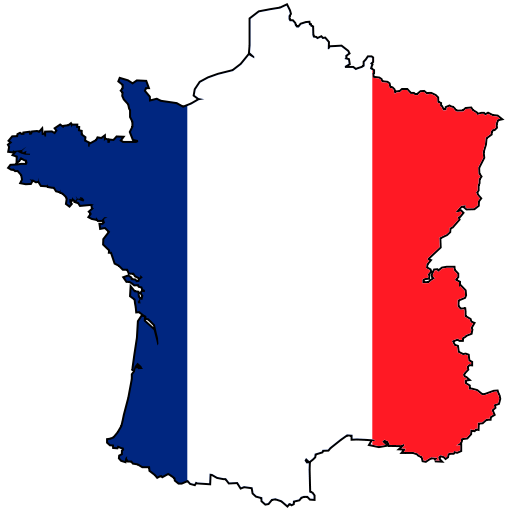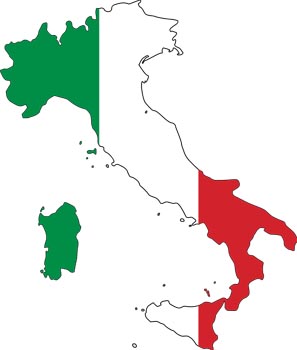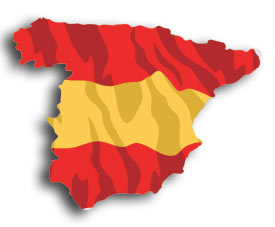The most symbolic evidence of the water crisis facing Italy this summer was the dry fountains in Saint Peter’s Square. Visiting tourists or pilgrims found not a drop of water flowing in the two fontane by 17th-century sculptors Carlo Maderno and Gian Lorenzo Bernini.
Sky-high temperatures have crippled farms and left Rome considering water rationing. Last month, ten regions across the country called for a state of emergency. Italy has suffered the second-driest spring in 60 years and rainfall in the first six months of the year fell 33 percent. This has deprived Italy of 20 billion cubic metres of water so far this year—the equivalent of Lake Como.
The Lazio region planned to ration water in Rome for 1.5 million inhabitants for up to eight hours a day. Subsequently pushed back until September 1, this followed the decision to stop drawing water from Lake Bracciano near the capital; water levels had become so low that it risked sparking an environmental disaster.
The news hit the headlines the world over. And then was quickly forgotten. Not in the Il Bel Paese. Especially not in Rome, where one conservation measure by city hall – lowering water pressure – reportedly forced residents of top-floor apartments to lug buckets up to their bathrooms and kitchens. While bills on bottled water soared.
Last week, the capital’s beleaguered Mayor Raggi declared the worse had been averted, after a court ruling meant the flow of water from Lake Bracciano, albeit scaled back, would not be interrupted.
The capital’s water company knows that droughts are part of a longer term trend, linked to climate change that is affecting Italy and elsewhere in Europe’s south. So quite sensibly this week it kicked off a public information campaign offering customers tips on simple things they can do to save water: turning off the tap instead of letting the water run unnecessarily (saving 5,000 gallons of water per year); taking a shower rather than a bath (120 litres each time); using appliances on full load (8,000 and 11,000 liters of water per year); and watering the flowers and plants using recycled cooking water (1,800 liters per year).
And it is keen to show it is doing its bit, too. It has already inspected 70% of the 5,000 kilometers long water network, promising to complete the repair work by the end of the year, so that by the summer of 2018 more than 1,000 litres per second that had been leaking will be recovered, and the use of Rome’s depleted Lake Bracciano can finally end. Most reassuring. But did things really have to get so bad before it took any action?
The most popular explanations for this summer’s water crisis is corruption, bureaucracy and ineptitude of politicians and senior public servants, as well as party political bickering (Lazio is controlled by the Democrats and the city of Rome by the upstart Five Star Movement).
What’s not been picked up in the media is how private interests of shareholders have helped create this public and environmental emergency. It turns out that Rome’s water company, ACEA ATO 2 S.p.A, paid out 93% of its euros 65 million annual earnings over the period of 2011 to 2015 to shareholders, the largest, with a 96% stake, being stockmarket listed ACEA SpA . Between them, the four major listed multi-utility companies IREN, A2A, HERA and ACEA, distributed over 2 billion euros in dividends, between 2010 and 2014.
With all that money leaking to shareholders no wonder Italian water companies haven’t been dealing with leaks on their networks (an extraordinary 45% of the capital’s water spills out underground or pools onto the street, or is stolen). There’s been a “drastic reduction in investment” to about a third of the level seen 20 odd years ago, when they were 100% publicly owned municipal providers, according to Marco Bersani, an economist and anti-privatisation activist. Not only has investment been cut but so have working conditions, the quality of the services; and while water consumption has increase so have tariffs, he says. All factors that have swollen the water company’s bottom line.
People are quite clear about what they think of private control over the nation’s water. Six years ago 27 million voted in two referenda against water marketisation. Yet Italy desperately needs an ambitious plan of investment in water. Bersani estimates that the modernization of Italy’s creaking water infrastructure would produce 200,000 jobs, a huge boon in a country with 2.9 million, or over 11%, without employment, rising to 35% among 15-24 year-olds. The cost would be about 15 billion euros.
And where would the money come for this? In June the Italian Government pledged 17 billion euros to rescue two Italian banks, Banca Popolare di Vicenza e Veneto Banca. So money is not in short supply. It really is just a question of priorities. Many Italians would likely agree that water should be at the top of the list.
The most symbolic evidence of the water crisis facing Italy this summer was the dry fountains visiting in Saint Peter’s Square. Visiting tourists or pilgrims found not a drop of water flowing in the two fontane by 17th-century sculptors Carlo Maderno and Gian Lorenzo Bernini.
Sky-high temperatures have crippled farms and left Rome considering water rationing. Last month, ten regions across the country called for a state of emergency. Italy has suffered the second-driest spring in 60 years and rainfall in the first six months of the year fell 33 percent. This has deprived Italy of 20 billion cubic metres of water so far this year—the equivalent of Lake Como.
The Lazio region planned to ration water in Rome for 1.5 million inhabitants for up to eight hours a day. Subsequently pushed back until September 1, this followed the decision to stop drawing water from Lake Bracciano near the capital; water levels had become so low that it risked sparking an environmental disaster.
The news hit the headlines the world over. And then was quickly forgotten. Not in the Il Bel Paese. Especially not in Rome, where one conservation measure by city hall – lowering water pressure – reportedly forced residents of top-floor apartments to lug buckets up to their bathrooms and kitchens. While bills on bottled water soared.
Last week, the capital’s beleaguered Mayor Raggi declared the worse had been averted, after a court ruling meant the flow of water from Lake Bracciano, albeit scaled back, would not be interrupted.
The capital’s water company knows that droughts are part of a longer term trend, linked to climate change that is affecting Italy and elsewhere in Europe’s south. So quite sensibly this week it kicked off a public information campaign offering customers tips on simple things they can do to save water: turning off the tap instead of letting the water run unnecessarily (saving 5,000 gallons of water per year); taking a shower rather than a bath (120 litres each time); using appliances on full load (8,000 and 11,000 liters of water per year); and watering the flowers and plants using recycled cooking water (1,800 liters per year).
And it is keen to show it is doing its bit, too. It has already inspected 70% of the 5,000 kilometers long water network, promising to complete the repair work by the end of the year, so that by the summer of 2018 more than 1,000 litres per second that had been leaking will be recovered, and the use of Rome’s depleted Lake Bracciano can finally end. Most reassuring. But did things really have to get so bad before it took any action?
The most popular explanations for this summer’s water crisis is corruption, bureaucracy and ineptitude of politicians and senior public servants, as well as party political bickering (Lazio is controlled by the Democrats and the city of Rome by the upstart Five Star Movement).
What’s not been picked up in the media is how private interests of shareholders have helped create this public and environmental emergency. It turns out that Rome’s water company, ACEA ATO 2 S.p.A, paid out 93% of its euros 65 million annual earnings over the period of 2011 to 2015 to shareholders, the largest, with a 96% stake, being stockmarket listed ACEA SpA . Between them, the four major listed multi-utility companies IREN, A2A, HERA and ACEA, distributed over 2 billion euros in dividends, between 2010 and 2014.
With all that money leaking to shareholders no wonder Italian water companies haven’t been dealing with leaks on their networks (an extraordinary 45% of the capital’s water spills out underground or pools onto the street, or is stolen). There’s been a “drastic reduction in investment” to about a third of the level seen 20 odd years ago, when they were 100% publicly owned municipal providers, according to Marco Bersani, an economist and anti-privatisation activist. Not only has investment been cut but so have working conditions, the quality of the services; and while water consumption has increase so have tariffs, he says. All factors that have swollen the water company’s bottom line.
People are quite clear about what they think of private control over the nation’s water. Six years ago 27 million voted in two referenda against water marketisation. Yet Italy desperately needs an ambitious plan of investment in water. Bersani estimates that the modernization of Italy’s creaking water infrastructure would produce 200,000 jobs, a huge boon in a country with 2.9 million, or over 11%, without employment, rising to 35% among 15-24 year-olds. The cost would be about 15 billion euros.
And where would the money come for this? In June the Italian Government pledged 17 billion euros to rescue two Italian banks, Banca Popolare di Vicenza e Veneto Banca. So money is not in short supply. It really is just a question of priorities. Many Italians would likely agree that water should be at the top of the list.





Discussion
No comments yet.